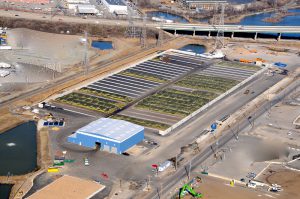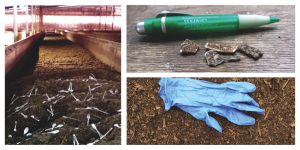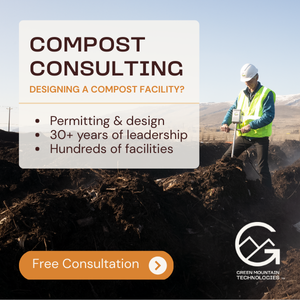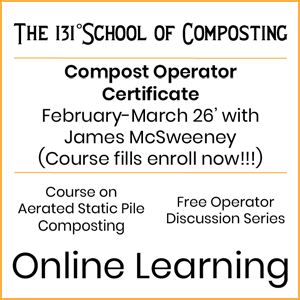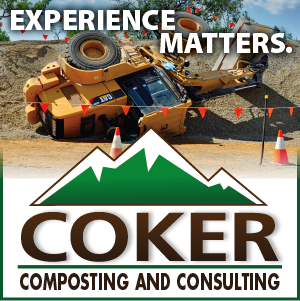BioCycle November 2014
Wilmington, Delaware: Composting Facility Ordered To Close
On October 20, 2014 David Small, Secretary of the Delaware Department of Natural Resources and Environmental Control (DNREC), issued a Secretary’s Order to Peninsula Compost Company LLC of Wilmington requiring closure of its organics recycling facility. The Order directs the company to immediately cease accepting any material at the facility and initiate steps to implement an orderly closure in compliance with a closure plan, the Composting Approval for Closure Activities. Owners of the facility — the Wilmington Organics Recycling Center (WORC) — had voluntarily ceased accepting new material in September.
The Order also requires all active composting of existing material on the site to be completed by January 16, 2015. All compost and related waste must be removed from the facility by March 31, 2015. “Peninsula Compost Company has placed an undue burden on the quality of life of residents in the City of Wilmington, parts of the City of New Castle and part of New Castle County — particularly those living in close proximity to the facility due to frequent uncontrolled odors,” said Secretary Small. “The company has been unable to maintain compliance with DNREC’s Beneficial Use Determination (BUD) permit.” WORC began operating in December 2009 with a BUD permit, which allowed the facility to accept and process hatchery waste, food waste, yard waste, wood waste, and animal bedding, in order to produce and market quality compost products at its facility in Wilmington. The company was processing about 115,000 tons/year of material.
Specific issues cited in the closure order relating to violations and odors include: Equipment has been nonoperational, sometimes for extended periods of time; Time needed to produce finished compost takes longer than originally planned; Waste or finished compost has been stored on-site above approved quantities; Noncompostable residuals from the screening process and trash have been stored on-site above approved levels; Trench drains and wear of the paved composting pad have allowed for standing leachate on-site; Poor maintenance of storm water ponds and aeration systems; Gore® Cover composting system has not been maintained appropriately; Mixture of food waste with yard waste/wood waste has been at a ratio that is too high; Feedstocks and composting windrows have been contaminated with noncompostable wastes; Occurrences of fires at the facility; Failure to develop markets to meet production demands.
Merrimack, New Hampshire: Compostable Cutlery Trial
In summer 2014, the City of Palo Alto, California, indicated in its Request for Proposals (RFP) for a new composting facility their intent for the composting system to process compostable plastics. In response, Rich Nicoletti, Compost Equipment Manager at BDP Industries, a dewatering equipment and composting system manufacturer, decided it was time to experiment. “This was the first time compostable plastics became something that BDP had to address,” explains Nicoletti. To test the effectiveness of BDP’s agitated bay composting system for processing compostable plastics, Nicoletti purchased 200 pieces of compostable cutlery, and brought them to the Merrimack (NH) municipal composting facility, an operation that utilizes a BDP agitator system to process ground wood waste and biosolids. “We wanted to create a ‘worst case scenario’, so we chose a heat resistant (200°F rated) compostable cutlery product line, and placed them untouched into the bay,” states Nicoletti. The compostable cutlery that was used in the experiment is made from TPLA (70% non GMO PLA and 30% talc.), and is certified under ASTM-6400 standards and by the Biodegradable Products Institute (BPI).
The compostable cutlery was actively composted in the bay for 21 days. During that time, the material went through 18 agitation cycles, moving the contents about 12 feet down the length of the bay with each agitation. The material also passed through six aeration zones that provide positive aeration and control temperature. Temperature ranged from 49°C to 62°C (120°-144°F), with an average of 54°C (129°F). At the end of the 21 days, compost was taken out of the bay and screened to three-eighth-inch. This material would typically go through a subsequent 30 to 60 day curing process, but Nicoletti and his team decided to visually scan for leftover compostable cutlery before curing.
“We found very tiny, friable [material that breaks down easily with touch] pieces in the overs, and nothing in the unders,” reports Nicoletti. “We couldn’t even find pieces when we spread the material out in our hand — and this is without any pregrinding of the cutlery, a step that would occur before processing any food waste [that includes compostable plastics] in the agitated bays. This experiment gives us the confidence to say that the BDP system can get 95 to 97 percent decomposition of compostable plastics.” Nicoletti and BDP thank the City of Merrimack and Jim Taylor, Assistant Director of Public Works, for allowing the company to conduct the experiment at its facility.
Washington, D.C.: American University Steps Toward Zero Waste
By 2020, American University (AU) plans to produce no carbon emissions, and send zero waste to the landfill. Working to make these lofty goals a reality are AU Zero Waste (ZW) staff members who coordinate ZW initiatives under facilities management. In 2013, when ZW staff introduced a four-bin collection system for sorting and disposing of waste, college students were confused by the multiple options. To combat confusion, in 2014, the program decided to focus on projects and campaigns that strive to teach students, faculty and staff about the differences between compostables, recyclables and trash, and why it is important to source separate. “We don’t see much contamination in recycling, but we see a lot of contamination in organic waste,” states Bryan Paz, ZW intern.
ZW staff plan to replace stickers from the bodies of waste bins with signs at the top of containers that depict images of what materials should go into individual bins. Having the stickers on top of the trash cans puts them into the students’ peripheral view and thus increases the chance for proper sorting. In addition, a creative social media campaign was developed to encourage correct sorting of organics. Twitter hashtags “#WhyWeRecycleAU” and “#WhyWeCompostAU” are being promoted among the campus community to draw attention to the importance of both recycling and composting.
Sobuczyna, Poland: Mixed Waste Composting Facility
A new municipal solid waste composting system in Sobuczyna will assist cities in Southern Poland to achieve European Union solid waste targets for organic waste diversion. The composting facility is colocated with the City of Czestochowa landfill and a materials recycling facility. It is designed to compost 22,000 tons per year of organics. Finished compost is marketed under the name “Stabilzat” (Stabilized MSW Compost), and is primarily used for alternate daily cover at the regional landfill. Engineered Compost Systems (ECS) designed and provided the in-vessel system and other key components, including aeration control and process monitoring. The composting system includes 18 SV Composter™ vessels, each with processing capacity of 233 cubic yards. The vessels are filled and unloaded using front-end loaders. A single stream of MSW enters the facility where recyclables are removed by pickers. Material is then passed through a 3-inch (80 mm) screen; fines are sent to the composting system for 17 to 28 days of primary composting. ECS redesigned its vessel doors for the Sobuczyna project, manufacturing them from fiberglass-reinforced plastic instead of stainless steel cladding over an aluminum frame. The new vessel door design is lighter weight, making the system easier to operate and less expensive to ship worldwide. ECS notes that the U.S. Export-Import Bank was a key resource in this project, enabling the company to compete for, and complete this project in Poland.
Boston, Massachusetts: City Soil Update
In October, City Soil, the nonprofit that manages Boston Public Works’ yard trimmings composting facility and engages in other organics recycling projects in the Boston area, completed a $50,000 feasibility study funded by the Massachusetts Clean Energy Center, Zoo New England and City Soil. The study assessed the technical and financial viability and community benefits of a project that involves recovering heat and carbon dioxide while producing high quality soil amendment from composting zoo manure, animal bedding, leaves and wood chips from Franklin Park and the surrounding urban forest, as well as food scraps from regional institutions and businesses. City Soil determined a fully enclosed rotary drum composting system would produce enough heat for more than a quarter of existing and new greenhouses and several existing buildings at the Zoo, while generating more than 2,500 cubic yards of finished compost to be sold and/or used on-site.
In addition, City Soil announced that in partnership with the Suffolk County Conservation District, it received $69,800 from the Massachusetts Department of Agricultural Resources to develop a demonstration greenhouse at the Zoo that will be heated by warm moist exhaust air from a composting system inside the greenhouse. And this past summer, City Soil partnered with the Trust for Public Land and the Urban Farming Institute to develop a 12,800 square foot urban farm on land that had been left overgrown and undeveloped for the past 25 years. This project was one of the first new urban farms under the Boston Redevelopment Authority’s Urban Agriculture Zoning Article 89. City Soil’s role was to provide the farm design, project management, heavy equipment, compost and mulch.



